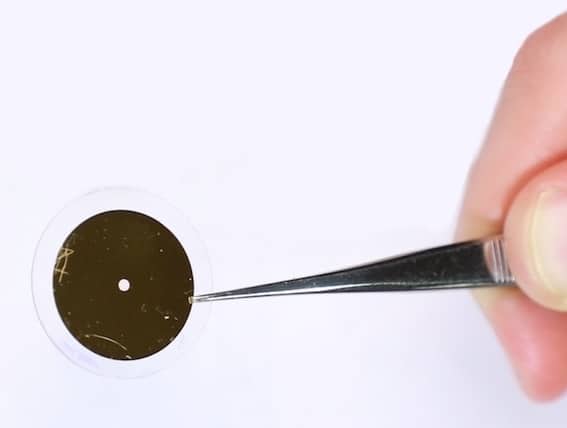
A compact and simple camera that can determine the full polarization of light has been developed by researchers in the US. The device uses a metasurface patterned with nanopillars to split incoming light into its four Stokes polarization parameters and then measures each one simultaneously. The team says that the technology could be used in a wide range of applications including remote sensing and facial recognition.
Put on a pair of polarizing sunglasses – which block horizontally-polarized light – and the world looks a bit different. If you look at the rear windows of some cars for example, you will notice a grid-like pattern that is normally invisible to the naked eye. The glasses are revealing stresses manufactured into the glass to ensure that it shatters safely. This is just one example of how measuring the polarization of light can reveal useful information about a material.
While blocking light of a certain polarization is relatively simple, determining the full polarization of light involves making separate measurements of four “Stokes parameters”. This is normally done using bulky optical systems that have moving parts and limited temporal resolution.
Matrix Fourier optics
To make Stokes measurements easier, Federico Capasso and colleagues at Harvard University have developed a new way of describing how the polarization of light interacts with optical systems. Dubbed “matrix Fourier optics”, the technique was then used by the team to create a nanostructured metasurface of tiny pillars that directs incident light according to its polarization. The metasurface can separate light into its four Stokes components, creating four separate images of an object. These images are then detected simultaneously and the information used to determine the full polarization of the light from the object.
The new device is about 2 cm long and the researchers say that it is no more complicated than a smartphone camera. The team showed that the device can measure the full Stokes polarization of light reflected from a number of different objects. This was demonstrated indoors using artificial illumination and outdoors using daylight.
Depth, texture and shape
“Polarization is a feature of light that is changed upon reflection off a surface,” says Harvard’s Paul Chevalier. “Based on that change, polarization can help us in the 3D reconstruction of an object, to estimate its depth, texture and shape, and to distinguish manmade objects from natural ones, even if they’re the same shape and colour.”

Daguerreotypes reveal their plasmonic secrets
Team member Noah Rubin adds, “This technology could be integrated into existing imaging systems, such as the one in your cell phone or car, enabling the widespread adoption of polarization imaging and new applications previously unforeseen”.
Capasso says that potential applications of the new camera include atmospheric science, remote sensing, facial recognition and machine vision.
The new camera is described in Science.



